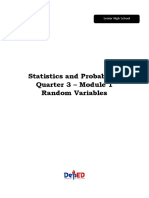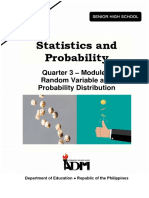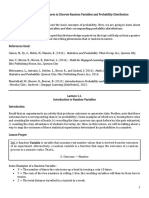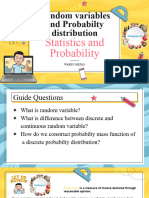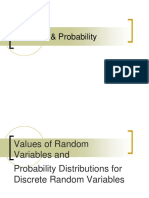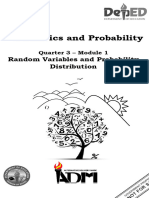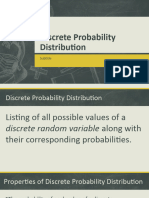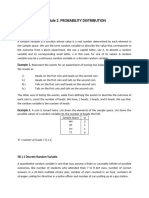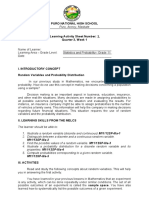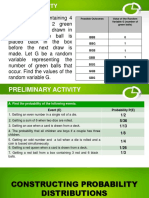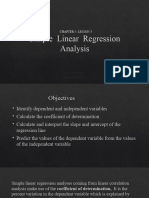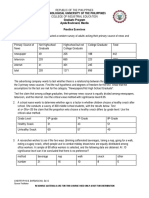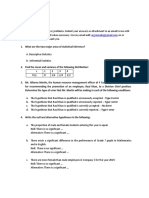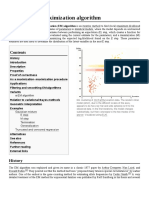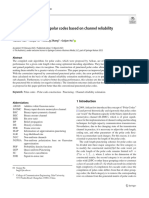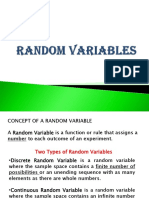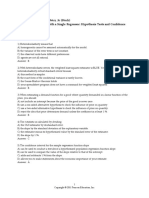0% found this document useful (0 votes)
10 views16 pagesModule 1 - Random Variables
This document covers the concepts of random variables and probability distributions, explaining how to construct probability mass functions for discrete random variables and compute their mean and variance. It distinguishes between discrete and continuous random variables, provides examples, and outlines properties of probability distributions. The document also includes exercises and examples to illustrate the application of these concepts.
Uploaded by
kennedyCopyright
© © All Rights Reserved
We take content rights seriously. If you suspect this is your content, claim it here.
Available Formats
Download as PDF, TXT or read online on Scribd
0% found this document useful (0 votes)
10 views16 pagesModule 1 - Random Variables
This document covers the concepts of random variables and probability distributions, explaining how to construct probability mass functions for discrete random variables and compute their mean and variance. It distinguishes between discrete and continuous random variables, provides examples, and outlines properties of probability distributions. The document also includes exercises and examples to illustrate the application of these concepts.
Uploaded by
kennedyCopyright
© © All Rights Reserved
We take content rights seriously. If you suspect this is your content, claim it here.
Available Formats
Download as PDF, TXT or read online on Scribd
/ 16















